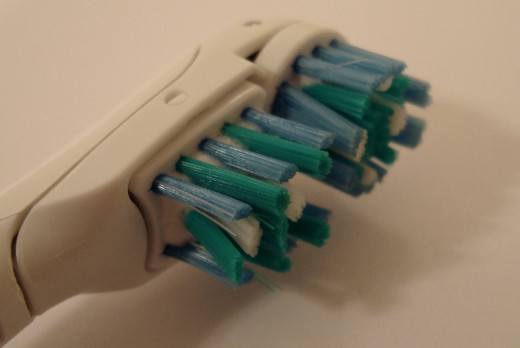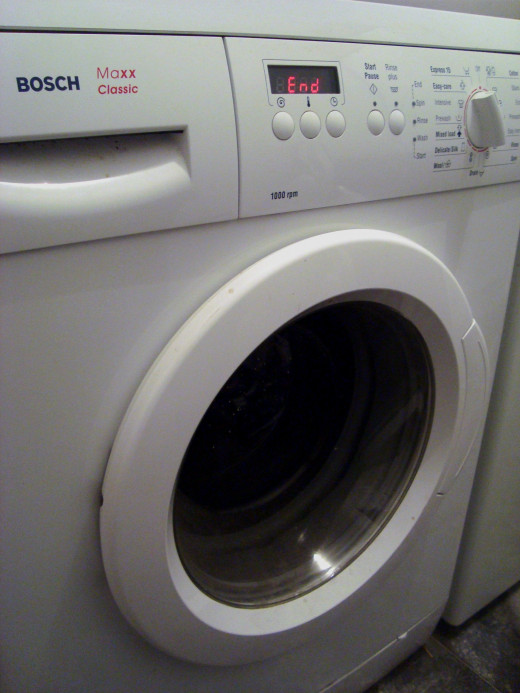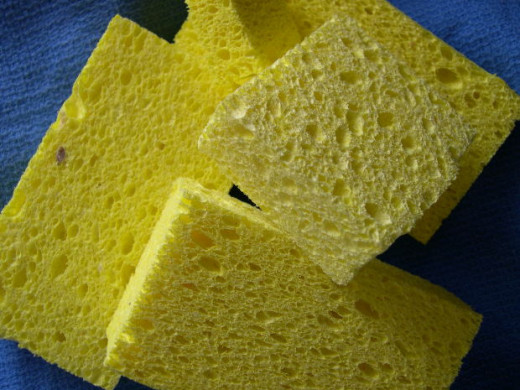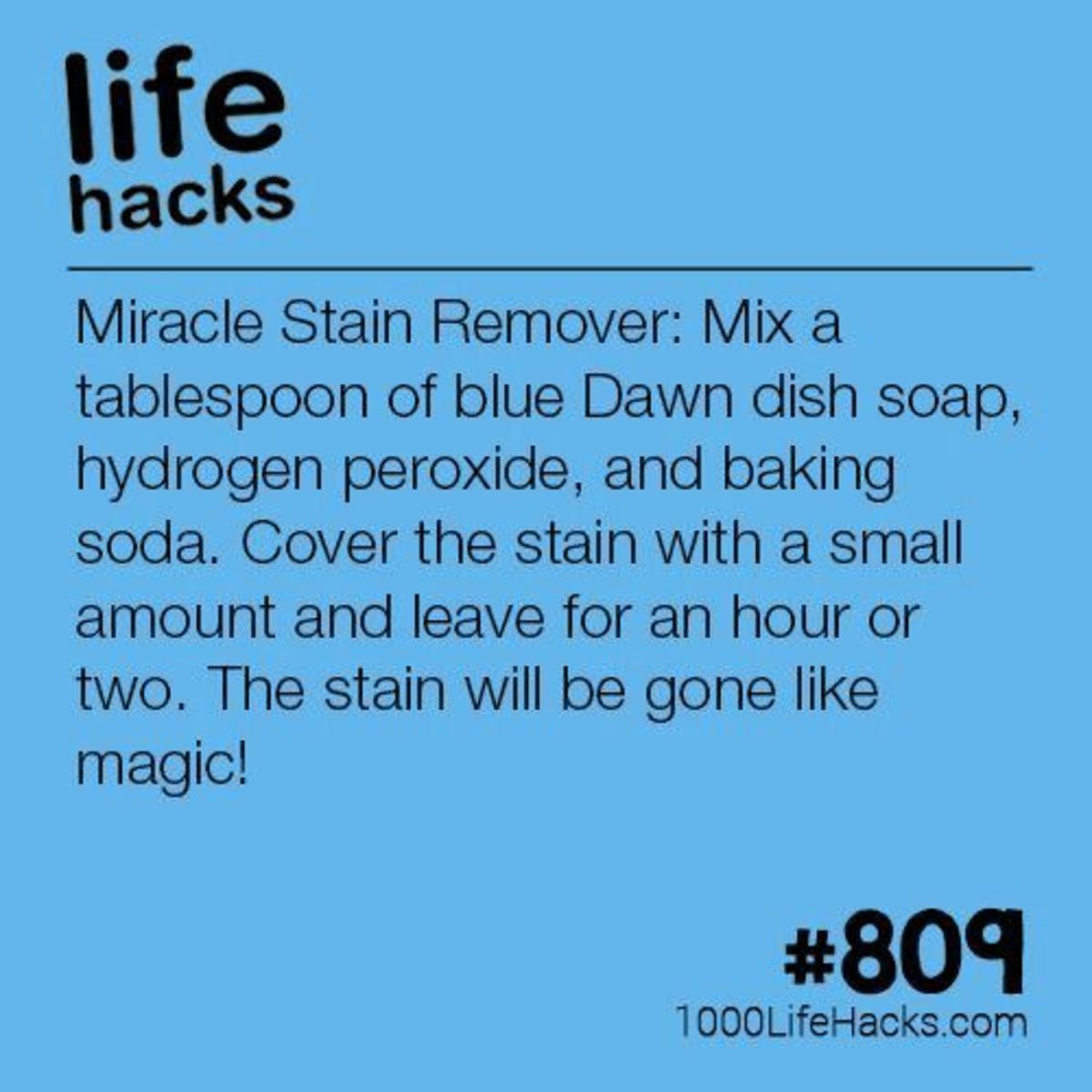4 of the Dirtiest Places in your House
What if I told you some of the filthiest places in your own home included your washing machine and toothbrush?
If you're already a germaphobe, look away now, because the following four products you use everyday can contain more than 200,000 times the bacteria found on the average toilet seat:

1. Your Toothbrush
Recent studies have, time and again, found that nearly half of all toothbrushes are the lucrative breeding grounds for trillions of dangerous bacteria such as E. coli.
There are a few ways bacteria latch onto toothbrushes:
- Use from an infected user
- Being left in a warm, damp, (bathroom-like) environment
- Bacteria zooming around your environment
Think you're safe because you bought your toothbrush yesterday? Think again, that 50% includes brand-new toothbrushes!
It gets worse however. Not only do you stick said toothbrush in a mouth containing on average, more than 500 types of bacteria, but around 30% of us leave the toothbrush out to collect (and cultivate) bacteria overnight.
If germs from your mouth aren't enough, don't make me tell you what happens to your toothbrush if you flush a toilet nearby. Sometimes, it all comes down to common sense. Would you leave your eating utensils in your bathroom, use them once or twice a day, and just rinse them under the tap? I'd hope not.

2. Washing Machine
How do you clean a washing machine?
Your average washing machine isn't exactly the pristine destroyer-of-bacteria it claims to be. In fact, some experts believe your laundry may actually be dirtier after you wash it. Why?
Certain experts believe that if you wash just one load of undergarments, you transfer around 500 million E. coli bacteria to the water in your machine, which can settle and multiply at the bottom. This is particularly true if you own a front-loader, because gravity assists in the process.
The germs that remain in your washing machine in turn contaminate other laundry, which often has its own bacteria to contribute. Overall, you're left with a cornucopia of germs spread evenly throughout your 'clean' clothes.
There are ways to mitigate the chances of germs spreading through your washing machine. However, you first need to consider these top 3 mistakes that you're probably making when you launder your clothes:
- Most people wash their clothes in water temperatures ranging from 30° - 40° Celsius (86° - 104° Fahrenheit). While this may save energy costs, it doesn't even kill 10% of the lowly dust mite.
- If you don't clean your washing machine with bleach, you can't kill the bacteria that call it home. This is because some detergents, particularly liquid detergents, don't kill bacteria. Ever since the rise of liquid detergent in the early 90's, the amount of bacteria in the average washing machine has noticeably increased.
- If you wash underwear in the same load as other clothes, approximately 100 million E. coli germs will remain in the wash water and spread to other clothes. Faecal matter can carry a number of viruses such as hepatitis A, salmonella, and E. coli in particular.
Keep reading or skip to the 'Solutions' section to find out how to lessen your chances of contamination.
3. The Dishwasher
Your average dishwasher is a soldier. It periodically receives nothing but dirty dishes and utensils, then returns them sparkling clean, just for you. Unfortunately, this degree of dedication must come with sacrifice.
In the curious case of the dishwasher, this sacrifice is the cleanliness of its outer seal. In an ideal world, when you consistently add that bacterial breakfast to your machine, it will be cleaned and the bacteria washed away forever. The reality is that it will stay.
Because the outer rim of the dishwasher rarely reaches a temperature high enough to kill them, the door seal of your average machine may be contaminated with nasty little things like fungus and black yeast.
Believe it or not, the water that makes it to the outer edges, actually contributes to the growth of the bacteria. There's ample food in recycled dish-water.

4. The Innocent Sponge
Ah ... the kitchen sponge. I saved the best for last, you see.
If you happen to have one nearby, look at it from a respectable distance. Notice the nooks, the crannies, and the crevices. The very features of a sponge that make it excellent for cleaning, also make it an excellent breeding ground for bacteria.
When you wipe down the kitchen bench or sink, you only transfer germs from one area to another. You'd literally be better to wash your bench with toilet water. Studies by Simmons College have shown that sponges and dishcloths have twice the rate of contamination of the toilet bowls they tested.
According to WebMD, "Kitchen sponges are the No. 1 source of germs in the whole house."
Which Is the Dirtiest?
Which of the Above Tools you use to Keep Clean, is the Dirtiest?
The Solution
Fortunately, there is hope in this war against germs.
Toothbrush:
To avoid unnecessary levels of bacteria from your toothbrush, follow these simple rules:
- Store your toothbrush in a dry area such as a closet. This will protect them from humidity and the spray from your toilet.
- A toothbrush should be replaced every three months, if cared for properly. Don't be frugal when it comes to your oral hygiene, (toothbrushes are still cheap).
- It sounds self-explanatory, but don't share your toothbrush. I won't judge you, but that's yuck.
Washing Machine:
You should periodically run an empty load in your washing machine that contains a mix of bleach and hot water, (Around 82° Celsius or 180° Fahrenheit). Around one cup of plain bleach per wash is optimal.
Furthermore, the order in which clothes are washed is important:
- Whites should be washed first, using chlorine bleach.
- Then comes underwear, which should be washed at around 66° Celsius (151° Fahrenheit) using a colour-safe bleach substitute.
Editor's Note:
I melted my sponge when I put it in the microwave. That's why I say "...For between one to two minutes".
Two minutes was too long for my microwave, so heat your sponge accordingly.
Dishwasher:
If you don't wash your dishes and cutlery regularly, you should rinse them with a very mild bleach solution, consisting of around 50 millilitres of bleach to 500ml of plain water.
For the reasons given above, you probably shouldn't use a sponge to do this.
The Innocent Sponge:
Thankfully, the worst of all is also the easiest to repair. To destroy the bacteria in your sponge, pop it in the microwave and zap it on high for between one to two minutes. That's it!
Feedback
Thank you for taking the time to read my article. Please feel free to comment below, your feedback is welcome and certainly appreciated. Also, if you enjoyed reading this article, check out my others at My Homepage.



